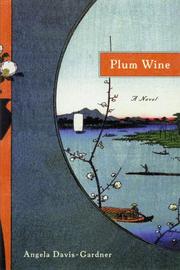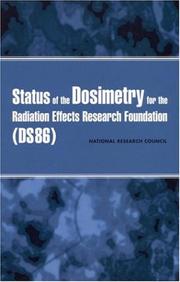| Listing 1 - 7 of 7 |
Sort by
|
Book
ISBN: 9786611793722 1281793728 0875865623 9780875865621 9781281793720 0875865607 0875865615 9780875865607 9780875865614 6611793720 Year: 2008 Publisher: New York, NY Algora Pub.
Abstract | Keywords | Export | Availability | Bookmark
 Loading...
Loading...Choose an application
- Reference Manager
- EndNote
- RefWorks (Direct export to RefWorks)
As the United States debates launching another war in the Middle East, this passionate diary paired with a pondered discussion provides a reality check on how governments goad citizens into going to war and gives a forthright look at the hideous results for civilian casualties. Who bears the responsibility for decisions made in a "democracy" when our leaders or the media exaggerate the threat and downplay the harm our actions will cause?. In this agonizing diary, a survivor of the 1945 atomic bombing of Hiroshima relates the horror of searching through smoldering rubble for signs of her family
Atomic bomb victims --- Okuda, Sadako. --- Okuda, Sadako Teiko, --- Okuda, Teiko, --- 奥田貞子, --- Hiroshima-shi (Japan) --- History
Book
ISBN: 9781501709432 1501709437 9781501714962 1501714961 9781501712074 1501712071 1501755250 Year: 2018 Publisher: Ithaca, NY
Abstract | Keywords | Export | Availability | Bookmark
 Loading...
Loading...Choose an application
- Reference Manager
- EndNote
- RefWorks (Direct export to RefWorks)
In 'Resurrecting Nagasaki', Chad R. Diehl examines the reconstruction of Nagasaki City after the atomic bombing of August 9, 1945. Diehl illuminates the genesis of narratives surrounding the bombing by following the people and groups who contributed to the city's rise from the ashes and shaped its postwar image in Japan and the world. Municipal officials, survivor-activist groups, the Catholic community, and American occupation officials interpreted the destruction and envisioned the reconstruction of the city from different and sometimes disparate perspectives.
Reconstruction (1939-1951) --- Atomic bomb victims --- Collective memory --- City planning --- History --- Nagasaki-shi (Japan) --- History --- Influence.
Book
ISBN: 0231538561 9780231538565 9781322489698 1322489696 9780231171168 0231171161 Year: 2014 Publisher: New York, NY : Columbia University Press,
Abstract | Keywords | Export | Availability | Bookmark
 Loading...
Loading...Choose an application
- Reference Manager
- EndNote
- RefWorks (Direct export to RefWorks)
Set in contemporary Nagasaki, the six short stories in this collection draw a chilling portrait of the ongoing trauma of the detonation of the atomic bomb. Whether they experienced the destruction of the city directly or heard about it from survivors, the characters in these tales filter their pain and alienation through their Catholic faith, illuminating a side of Japanese culture little known in the West. Many of them are descended from the "hidden Christians" who continued to practice their religion in secret during the centuries when it was outlawed in Japan. Urakami Cathedral, the center of Japanese Christian life, stood at ground zero when the bomb fell.In "Birds," a man in his sixties reflects on his life as a husband and father. Just a baby when he was found crying in the rubble near ground zero, he does not know who his parents were. His birthday is set as the day the bomb was dropped. In other stories, a woman is haunted by her brief affair with a married man, and the parents of a schizophrenic man struggle to come to terms with the murder their son committed. These characters battle with guilt, shame, loss, love, and the limits of human understanding. Ground Zero, Nagasaki vividly depicts a city and people still scarred by the memory of August 9, 1945.

ISBN: 0299211630 9780299211639 0299211606 9780299211608 Year: 2006 Publisher: Madison University of Wisconsin Press, Terrace Books
Abstract | Keywords | Export | Availability | Bookmark
 Loading...
Loading...Choose an application
- Reference Manager
- EndNote
- RefWorks (Direct export to RefWorks)
Women teachers --- College teachers --- Female friendship --- Atomic bomb victims --- Psychological fiction, Japanese --- Inheritance and succession --- Translating and interpreting --- Americans --- Japan --- Hiroshima-shi (Japan)

ISBN: 0309075599 0309511240 9780309511247 9780309075596 0305075599 0309170982 Year: 2001 Publisher: Washington, DC : National Academy Press,
Abstract | Keywords | Export | Availability | Bookmark
 Loading...
Loading...Choose an application
- Reference Manager
- EndNote
- RefWorks (Direct export to RefWorks)
Atomic bomb victims. --- Hiroshima-shi (Japan) -- History -- Bombardment, 1945. --- Nagasaki-shi (Japan) -- History -- Bombardment, 1945. --- Radiation dosimetry. --- Radiation, Ionizing --- Radiometry --- Nuclear Warfare --- War --- Investigative Techniques --- Radiation --- Electromagnetic Phenomena --- Social Problems --- Analytical, Diagnostic and Therapeutic Techniques and Equipment --- Sociology --- Physical Phenomena --- Social Sciences --- Phenomena and Processes --- Anthropology, Education, Sociology and Social Phenomena --- Nagasaki-shi (Japan) --- Hiroshima-shi (Japan) --- History --- A-bomb victims --- Hibakusha --- Victims of atomic bombings --- Dosimetry --- Radiation monitoring --- Dosage --- Measurement --- War victims --- Nuclear counters
Book
ISBN: 1501709437 1501755250 1501712071 1501714961 Year: 2018 Publisher: Ithaca : Cornell University Press,
Abstract | Keywords | Export | Availability | Bookmark
 Loading...
Loading...Choose an application
- Reference Manager
- EndNote
- RefWorks (Direct export to RefWorks)
In 'Resurrecting Nagasaki', Chad R. Diehl examines the reconstruction of Nagasaki City after the atomic bombing of August 9, 1945. Diehl illuminates the genesis of narratives surrounding the bombing by following the people and groups who contributed to the city's rise from the ashes and shaped its postwar image in Japan and the world. Municipal officials, survivor-activist groups, the Catholic community, and American occupation officials interpreted the destruction and envisioned the reconstruction of the city from different and sometimes disparate perspectives.
City planning --- Collective memory --- Atomic bomb victims --- Reconstruction (1939-1951) --- A-bomb victims --- Hibakusha --- Victims of atomic bombings --- War victims --- Collective remembrance --- Common memory --- Cultural memory --- Emblematic memory --- Historical memory --- National memory --- Public memory --- Social memory --- Memory --- Social psychology --- Group identity --- National characteristics --- Cities and towns --- Civic planning --- Land use, Urban --- Model cities --- Redevelopment, Urban --- Slum clearance --- Town planning --- Urban design --- Urban development --- Urban planning --- Land use --- Planning --- Art, Municipal --- Civic improvement --- Regional planning --- Urban policy --- Urban renewal --- World War, 1939-1945 --- Postwar reconstruction --- History --- Government policy --- Management --- Reconstruction --- Nagasaki-shi (Japan) --- Nagasaki (Japan) --- Influence. --- the aftermath of Nagasaki, Hiroshima, atomic bombs, disaster recovery, nuclear attacks, atomic bomb survivors.
Book
ISBN: 128282063X 9786612820632 1442207493 9781442207493 9781442207479 1442207477 Year: 2010 Publisher: Lanham [etc.] Rowman & Littlefield Publishers
Abstract | Keywords | Export | Availability | Bookmark
 Loading...
Loading...Choose an application
- Reference Manager
- EndNote
- RefWorks (Direct export to RefWorks)
This compelling autobiography tells the life story of famed manga artist Nakazawa Keiji. Born in Hiroshima in 1939, Nakazawa was six years old when on August 6, 1945, the United States dropped the atomic bomb. His gritty and stunning account of the horrific aftermath is powerfully told through the eyes of a child who lost most of his family and neighbors. The narrative continues through the brutally difficult years immediately after the war, his art apprenticeship in Tokyo, his pioneering ""atomic-bomb"" manga, and the creation of Bar
Cartoonists --- Comic books, strips, etc. --- Atomic bomb victims --- Comic strips --- Comics --- Funnies --- Manga (Comic books, strips, etc.) --- Manhua (Comic books, strips, etc.) --- Manhwa (Comic books, strips, etc.) --- Serial picture books --- Caricatures and cartoons --- Wit and humor, Pictorial --- History. --- Nakazawa, Keiji. --- Nakazawa, Keiji --- 中沢啓治 --- 中沢啓治. --- Childhood and youth. --- Family. --- Hiroshima-shi (Japan) --- Japan --- Hiroshima --- Hirosima-si (Japan) --- Hiroschima (Japan) --- Khirosima (Japan) --- Hirosjima (Japan) --- Hiroshima (Japan) --- Hiroshimah (Japan) --- Kabe-machi (Japan) --- Asa-chō (Japan) --- Aki-chō (Japan) --- Shiraki-chō (Japan) --- Numata-chō (Hiroshima-ken, Japan) --- Senogawa-chō (Japan) --- Funakoshi-chō (Hiroshima-ken, Japan) --- Hesaka-chō (Japan) --- Itsukaichi-chō (Hiroshima-ken, Japan) --- Nakayama-mura (Hiroshima-ken, Japan) --- Inokuchi-mura (Hiroshima-ken, Japan) --- History --- Manhua (Comic books) --- Manhwa (Comic books) --- Drawing --- Literature --- Graphic artists --- beeldverhalen --- autobiografieën (genre)
| Listing 1 - 7 of 7 |
Sort by
|

 Search
Search Feedback
Feedback About UniCat
About UniCat  Help
Help News
News